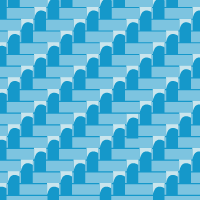Topic Menu
► Topic MenuTopic Editors

Multifunctional Concrete for Smart Infrastructures
Topic Information
Dear Colleagues,
Concrete (a collective term referring to concrete, cement mortar and cement paste as well as cementitious/cement-based material/composite) is the most widely used material for infrastructures because it has excellent mechanical strength, durability, and resistance to water, is easily formed into various shapes and sizes, and is cheap and readily available everywhere. Compared with other construction materials, the production of concrete consumes the least amount of materials and energy, produces the least amount of harmful by-products, and causes the least amount of damage to the environment. In the foreseeable future, concrete will continue to play an important role in infrastructure construction. However, traditional concrete just serving as structural materials cannot meet the continually increasing requirements in terms of safety, longevity, resilience and function of advanced engineering infrastructures as well as low carbon footprint of concrete and infrastructures. In this context, multifunctional concrete appears and becomes an important development direction in the field of concrete. Multifunctional concrete is an advanced composite with additional properties different from those of conventional concrete, such as self-sensing, self-healing, electrical conductivity, thermal, electromagnetic properties, (super)hydrophobic, light-transmitting/emitting, photocatalytic, energy harvesting and anti-bacterial/virus, or the ability to react upon an external stimulus, such as loading/deformation, temperature and humidity. The multi-functionality of concrete is achieved through material composition design, special processing, introduction of other functional components, or modification of microstructures. The concept of multifunctional concrete was developed in the late 1980s. In the past four decades, much research has been conducted on development and deployment of multifunctional concrete for smart infrastructures. This Special Issue aims at introducing new findings and summarizing recent developments in the field of multifunctional concrete for smart infrastructures, thus providing a platform for researchers to focus on the current progress and the future of multifunctional concrete for smart infrastructures.
Prof. Dr. Ashraf A. Ashour
Prof. Dr. Baoguo Han
Topic Editors
Keywords
- concrete
- cement-based material/composite; cementitious material/composites
- geopolymer; multifunctional
- self-sensing; self-healing; self-heating; self-curing; self-adjusting
- wear resisting; anti-spalling; electrically conductive
- light-transmitting; light-emitting
- photocatalytic
- electromagnetic wave shielding/absorbing
- radiation shielding
- (super)hydrophobic; permeable
- energy harvesting
- anti-bacterial/virus
- sustainable; resilient
- low carbon footprint
- smart infrastructures
Participating Journals
| Journal Name | Impact Factor | CiteScore | Launched Year | First Decision (median) | APC |
|---|---|---|---|---|---|

Construction Materials
|
- | - | 2021 | 25.9 Days | CHF 1000 |

Infrastructures
|
2.6 | 4.3 | 2016 | 16.9 Days | CHF 1800 |

Journal of Composites Science
|
3.3 | 4.5 | 2017 | 14.7 Days | CHF 1800 |

Materials
|
3.4 | 5.2 | 2008 | 13.9 Days | CHF 2600 |

MDPI Topics is cooperating with Preprints.org and has built a direct connection between MDPI journals and Preprints.org. Authors are encouraged to enjoy the benefits by posting a preprint at Preprints.org prior to publication:
- Immediately share your ideas ahead of publication and establish your research priority;
- Protect your idea from being stolen with this time-stamped preprint article;
- Enhance the exposure and impact of your research;
- Receive feedback from your peers in advance;
- Have it indexed in Web of Science (Preprint Citation Index), Google Scholar, Crossref, SHARE, PrePubMed, Scilit and Europe PMC.


